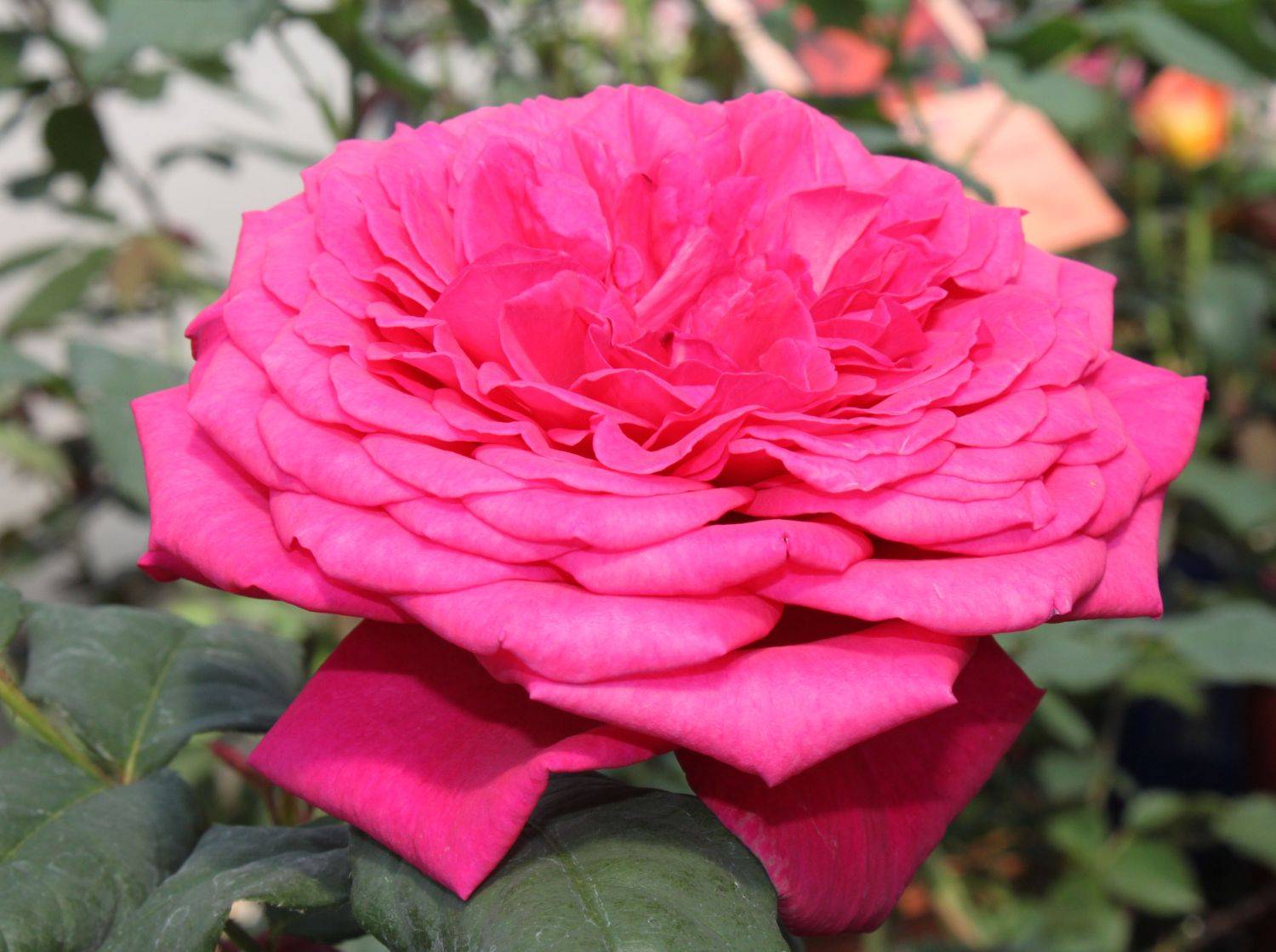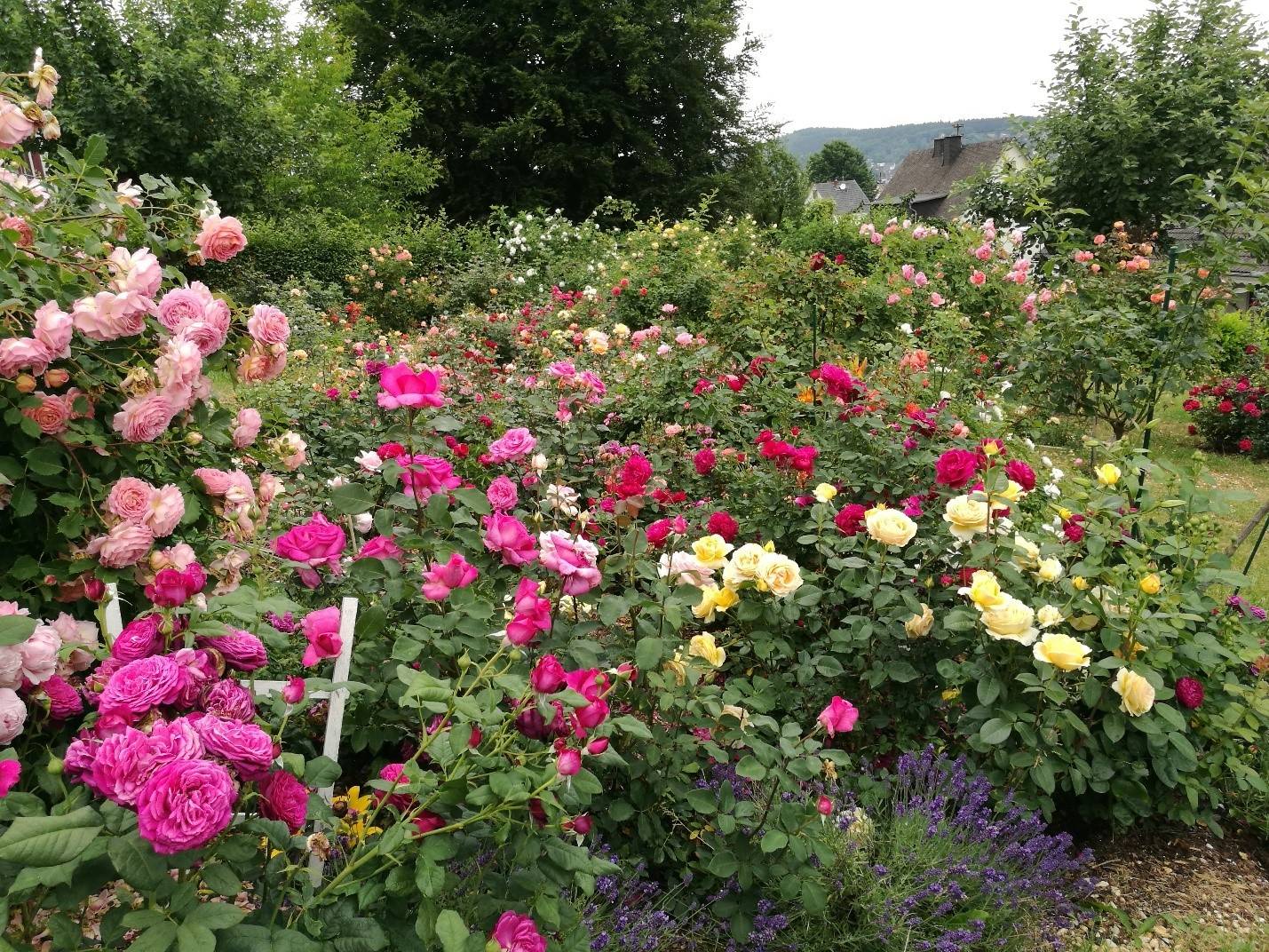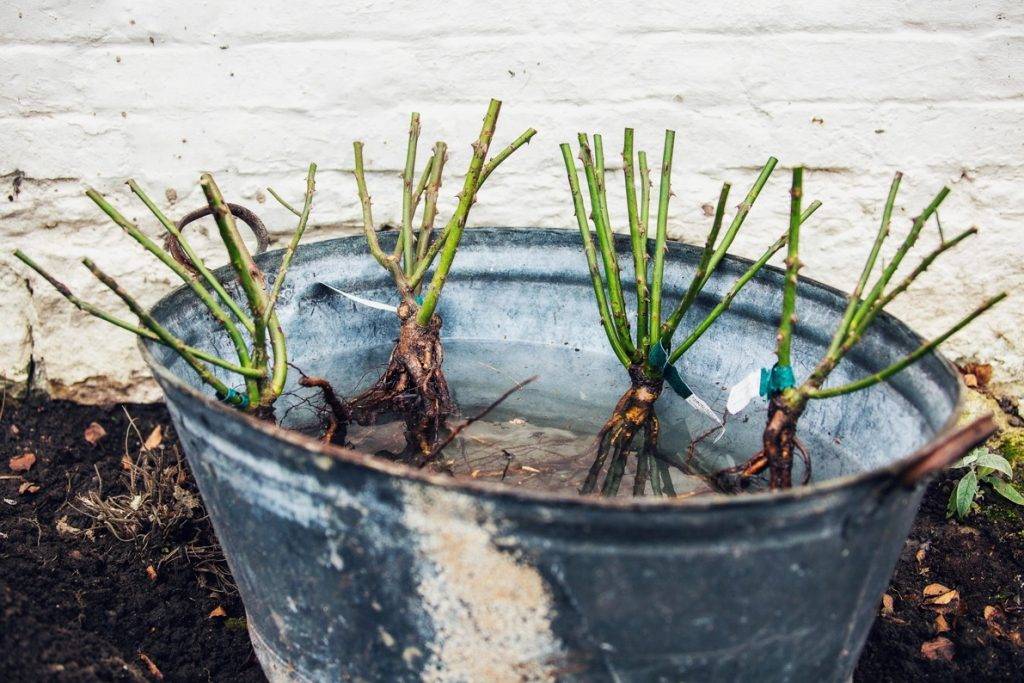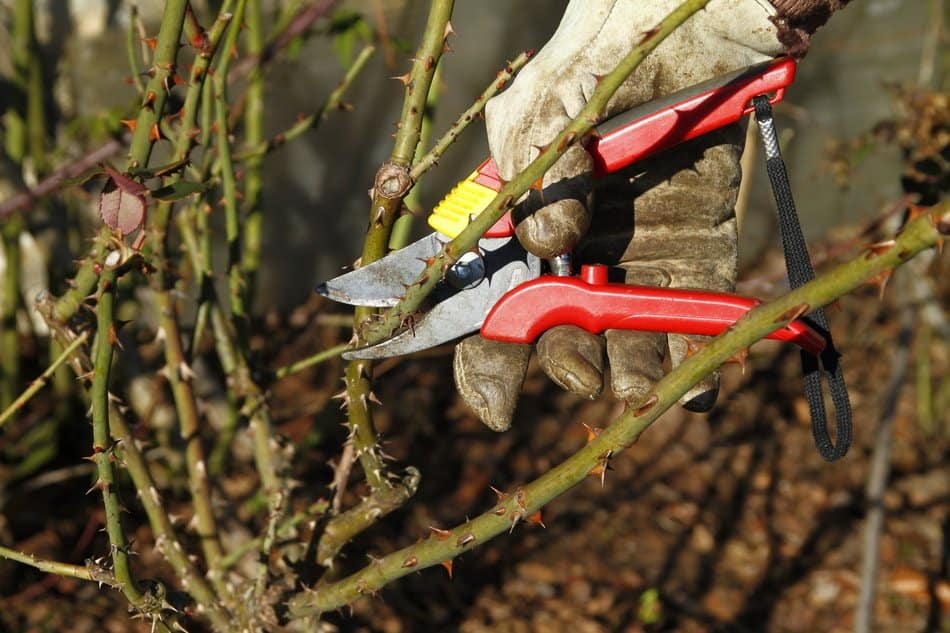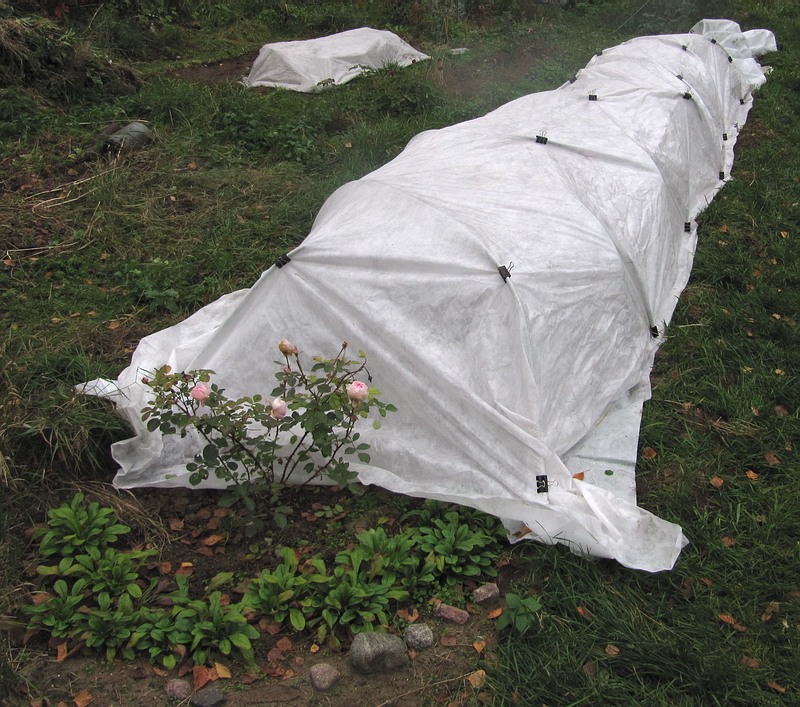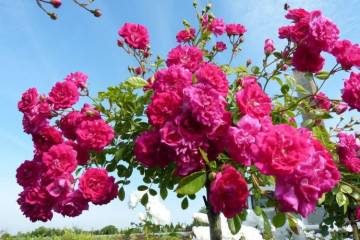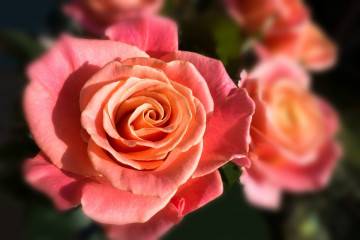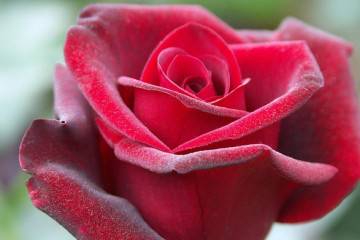Rose Johann Wolfgang von Goethe (Johann Wolfgang von Goethe) - what is this variety
Content:
Bright, fragrant, abundantly blooming - this is the description given by growers to the rose Johann Wolfgang, which appeared on the market more than 10 years ago. Due to its beautiful appearance and unpretentiousness in a short period of time, the variety has taken root both in private plots and in city parks.
Characteristics of the variety
In 2004, German breeders bred a new rose with a strong aroma, rich color and frost resistance. The flower was named after the German writer Goethe - rose Johann Wolfgang von Goethe, who created the poem "Wild Rose" (about a fragrant rose and a boy who pricked his thorns).
Appearance
Rose Wolfgang Goethe belongs to the hybrid tea species and is re-flowering. The bush reaches 1-1.4 m in height and 1.2 m in width. Leathery foliage is dark green with a bluish tinge. On a powerful stem, 2-5 purple buds are formed, consisting of 90-100 petals. The diameter of a double flower is 12-15 cm.
Advantages and disadvantages
Positive aspects of the variety:
- long and abundant flowering (summer and part of autumn). The flower lasts 10 days;
- winter hardiness (withstands temperatures up to −23 ° С);
- intense aroma, thanks to which the rose has received the name-synonym Parfum de Honfleur
- disease resistance (powdery mildew, black spot);
- the ability to endure bad weather (heat, rain);
- ease of shaping the bush.
The florists did not find any drawbacks of this variety. Some mention the relatively small number of inflorescences on the stem and the longevity of the bush.
Goethe rose in landscape design
Due to the fact that this variety has large flowers that do not fade in the sun, as well as resistance to cold and disease, it is often chosen by landscape designers to decorate parks. Bushes are suitable for the formation of hedges, growing in flower beds. Bushes become independent accents in a large green area.
Growing a flower
For over 10 years, flower growers have been successfully growing Goethe's rose bushes.
Planting material
Seedlings are used as planting material (seeds are rarely sold). They are carefully examined for the presence of diseases: the stems should be healthy, strong and not dried out, the buds should be at rest.
Planting period
Planting time depends on the region: in the south and in the Middle Lane - it is autumn; in the north - spring. The earth should be warmed up to 12 ° C.
Place for a rose
The site should be well lit, but slightly shaded to avoid the scorching sun hitting the bushes. You should not plant the plant in windy areas and in lowlands where water accumulates.
Preparation of seedlings and plot
The required soil is chernozem and loamy soil with an acidity of pH 6-6.5. With an insufficient pH level, manure or peat are introduced into the soil in autumn, and with an excessive pH, ash and lime are introduced. Before planting a rose, the ground must be moistened (2 liters of water per well).
Before planting, the seedling is placed in a container with clay soil dissolved in warm water (for 15 minutes) and for 30 minutes. in a solution of potassium permanganate (to disinfect the roots).
Description of planting roses Johann Wolfgang von Goethe rose
Landing technology:
- Dig a hole 50 × 50 × 50 cm.
- 10 cm of drainage is laid out on the bottom (crushed stone, gravel, etc.).
- Place the same layer of soil mixed with manure on top.
- Pour 10 cm of soil.
- A seedling is placed in the hole (the root collar should be 3 cm below ground level).
- Holding the bush, the hole is covered with earth, tamping each layer.
- The bush is plentifully watered at the root (5 liters of water).
- After the subsidence of the soil around the seedling, soil is poured.
- The area around the rose is mulched with peat (40-50 cm in diameter).
Care features
Compliance with simple rules of care will allow you to grow lush bushes, delighting with their beauty and aroma.
Watering and humidity
Rose Johann Wolfgang Goethe does not need frequent watering, the soil is moistened as the top layer dries up (1-2 times a week in the evening). The exception is hot periods, during which daily watering is carried out.
At the end of summer, the number of waterings is reduced to once a week, in September - to 1-2 times a month.
Top dressing and soil requirements
In the spring, before the formation of buds, the flower is fed with nitrogen fertilizers: 10 g of urea and 15 g of nitrate are diluted in 12 liters of water.
In the summer (before flowering), phosphorus-potassium supplements are added to the ground. During budding, organic matter is also used (chicken droppings and mullein): the bushes are watered with a 2-week infusion of 1 liter of manure and 8 liters of water.
Pruning and replanting
Pruning of bushes is done:
- to rejuvenate the old bush. Shoots are shortened in the spring (before buds appear) and 2-3 buds are left from the ground;
- to stimulate profuse flowering and splendor. Shoots are cut in spring, leaving 6-7 buds;
- to remove loose buds in summer;
- to remove diseased and dried parts of the plant, to form the crown (second half of October);
- before replanting the plant (pruning will speed up rooting).
The flower should be transplanted in the spring. The distance between the rose bushes must be kept at least 60 cm, between the rose and other plants - 90 cm. Excessively close proximity will not allow the flower to receive a sufficient amount of moisture and light.
How Goethe's rose winters
In October, dried foliage and unripe buds are removed.
In the southern regions and in the central part of Russia, it is not required to prepare a flower for winter. In northern latitudes, with the onset of stable frosts (-5-7 ° C), a shelter is created: spruce paws are laid around the bushes and on top, capable of holding snow.
The second option is the so-called air-dry shelter: a frame is built from the boards around the bush and covered with a covering material - lutrasil, roofing felt or spunbond. The structure must be strong so as not to break under the weight of the snow and not damage the bushes.
Also, with the above material, you can cover roses without a frame, bending the shoots to the ground.
Flowering features
The description of the Wolfgang Goethe rose variety as plentiful and long-flowering is fully justified, since all summer and part of autumn the bushes delight with flowering and aroma.
Periods of activity and rest
The period of activity begins in March, and buds form in the middle of the month. In southern latitudes in late April - early May, the first leaves appear. Flowering starts in June and lasts until the end of September.
In November, a dormant period begins, the growing season stops. However, with an increase in temperature above 0 ° C, the movement of juice may resume, which will lead to its freezing with the arrival of frost. For this reason, it is recommended to take care of plant protection in winter.
How to care for a rose during and after flowering
Care during and after flowering includes:
- proper watering (during the blooming of the buds, the plant needs more moisture);
- timely pruning (removing the flown inflorescences gives the rose strength to form new ones);
- fertilization to stimulate flowering;
- pest control.
Why does not a rose bloom
Flowering problems can be caused by:
- wrong landing site (should be transplanted to a lighted place or removed from the scorching sun);
- lack of nutrients (fertilize the soil, treat with stimulants);
- freezing (cover next winter);
- insufficient or excessive watering.
Reproduction of the Goethe rose
Reproduction occurs by cuttings. For this, shoots are used, cut in the spring (before the formation of buds) or in the fall (already faded).
Cutting technology:
- Shoots are cut off with a length of about 20 cm.
- Place in a vessel with water for 2-3 days.
- Then they are placed in the ground and covered with a cap.
- Provides daily watering.
- After the first buds appear, the plants are planted in a permanent place.
Disease and pest control
Rose Johann Wolfgang Goethe is resistant to disease, however, sometimes problems such as:
- powdery mildew (white bloom on the leaves);
- rust (rusty raised spots on greenery);
- black spot (black spots on foliage);
- gray rot (fluffy bloom on shoots and buds);
- tick, aphid, etc.
Removal of the affected parts and treatment with insecticides (foundationol, topaz for powdery mildew and rot, ordan for rust, soon with spotting) will relieve the listed diseases. Treatment with soapy water will help in getting rid of parasites.
With proper care, the Goethe rose will become a worthy decoration of the garden or a bright accent of the park landscape. A persistent and unpretentious beauty can take root on the site even with a novice florist.
